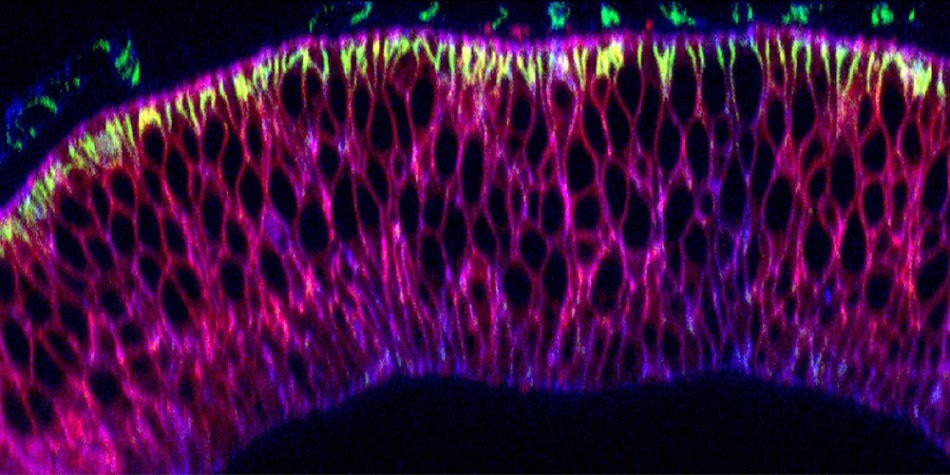Apr 12 2017
 Nanobodies (pink) in the wing precursor of a fruit fly larva. (Image: University of Basel, Biozentrum)
Nanobodies (pink) in the wing precursor of a fruit fly larva. (Image: University of Basel, Biozentrum)
A team of researchers at the Biozentrum of the University of Basel have formulated a new technique by which proteins can be moved to a new location in a cell. The unique tool enables researchers to explore the function of proteins based on their position by using nanobodies. The tool can be used for a broad range of proteins and in varied areas of developmental biology. The research results have been published in the scientific journal eLife.
The research group of Markus Affolter is analyzing the growth of the wings of the fruit fly Drosophila to figure out which processes control organ development and growth. Proteins that regulate such growth processes are the areas of focus of their study. In this context, not only the composition of the proteins is essential, but also their position which can impact protein function. The Affolter research team’s nanobody tool allows the transfer of proteins, and thus allowing examination of their function in a position-dependent manner.
Novel tool for all GFP-bound proteins
A repositioning of the proteins of interest necessitates a labeling with the green fluorescent protein (GFP). Then, anti-GFP nanobodies, tiny antibody fragments derived from camels, are used to bind and to transfer the GFP-tagged proteins to a new site in the living organism. The nanobody itself is connected to a signal protein that determines the destination of the target protein. Thus, the nanobody forces the GFP-tagged protein into a new position. “Even if we do not know exactly the composition and structure of a protein, we can label it with GFP and control the destination site by using nanobodies,” says Stefan Harmansa, one of the two first authors.
Artificial relocation with nanobodies
The researchers could transfer proteins to a new site, external or internal to the cell. “By transporting proteins to new locations, we can observe whether their function changes or not and whether development is affected,” says Ilaria Alborelli, also one of the first authors of the study.
Thus far, researchers have been limited in transferring proteins. The new nanobody tool, however, makes it possible to easily and resourcefully alter the position of all GFP-tagged proteins and thus explore their operations. Using this nanobody tool, the Affolter group has already been successful in studying the growth of Drosophila wings. By interfering with the signaling molecule Dpp in a position-dependent manner, the team has been able to demonstrate more precisely its impact on wing growth.
The new nanobody tool can be used for various studies on organ growth and in numerous other areas of developmental biology. With this theory, the growth and the development of varied cells and organs can be studied comprehensively.
The Affolter team also has to deal with many new challenges. “We as developmental biologists are still confronted with urgent questions such as how an organism knows when it has to stop its growth. To put it succinctly, how does it work that arms or legs stop growing when they reach their correct length?”, says Stefan Harmansa. Going forward, the novel tool may add to a better understanding of how organ growth is controlled.